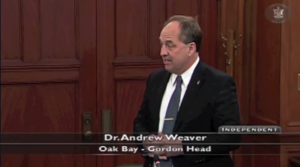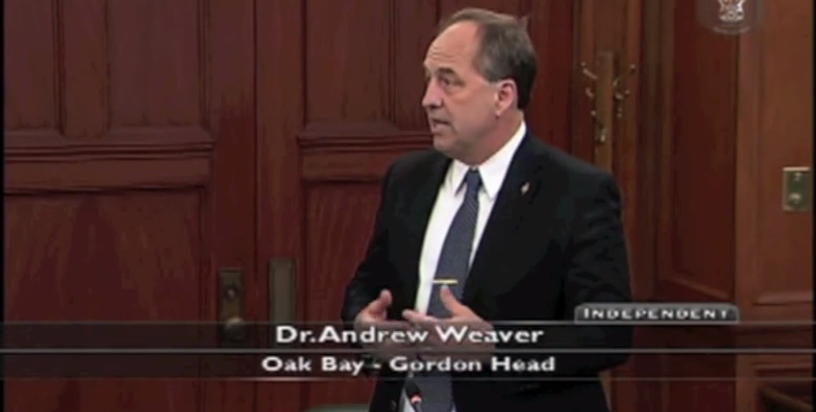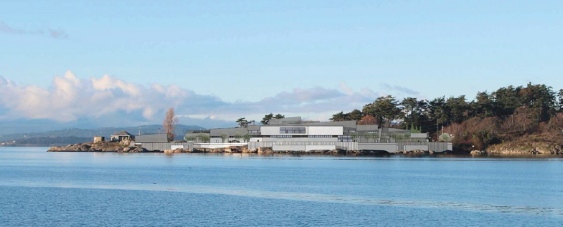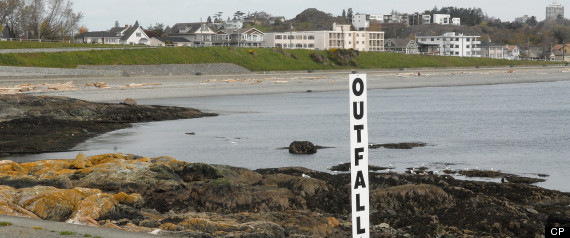Sewage
Minister says “No Plan to Intervene” in Esquimalt Sewage Plant Re-Zoning
Media Statement: April 9th, 2014
Minister says “No Plan to Intervene” in Esquimalt Sewage Plant Re-Zoning
For Immediate Release
Victoria BC – In the House Tuesday Andrew Weaver asked the Minister of Environment, The Honourable Mary Polak, if the government had any intention of intervening over Esquimalt council’s unanimous rejection of the Capital Regional District plans for a sewage treatment plant at McLoughlin Point.
The reply from the Minister was – “We have no plans to intervene”
“The Minister has been consistent with her message regarding the CRD since I first raised this question in the House last year. She has no plans to intervene, and the program funding is available through to the completion deadline of 2020. “ said Andrew Weaver
Draft Transcript from Hansard, Tuesday April 8th, Afternoon Session, Committee A.
A Weaver: As the minister is aware, Esquimalt Council voted unanimously last night to reject the capital regional district rezoning request for McLoughlin Point for the sewage plant there. This comes, following considerable public engagement — four evenings of public consultation where only one person spoke in favour of the project, and many, many, many others spoke against it. The public consultation demonstrated there’s little, if any, support for the current plan.
My question is this: considering the CRD currently has no alternative site for the treatment plant and, in fact, Esquimalt have tasked staff with putting together information to rezone McLoughlin Point to not allow a sewage plant there, will the minister reassure residents of the region that the province will not intervene on the zoning unless the CRD proves all other options are exhausted?
Hon. M. Polak: I can assure the member that our position remains the same today as it has in the past. The federal government requires that they treat their sewage by 2020. This is an obligation that falls on the local governments. It’s unfortunate that they’ve reached this kind of an impasse.
I understand that CRD is meeting this week, perhaps even tomorrow, to discuss the implications. I’m not going to speculate on what might result from that, but we have no plans to intervene. We’ve said from the beginning that this is an issue that the local governments need to grapple with, understanding that they’re the ones who are obligated to begin treatment of their sewage. We have no plans to intervene
Media Contact
Mat Wright – Press Secretary, Andrew Weaver MLA
mat.wright@leg.bc.ca
1 250 216 3382
Town Hall: Towards a Better Sewage Plan
It is an issue that affects the entire Capital Regional District, and the largest, costliest infrastructure project in our history. The $783 million proposed CRD (now re-branded as Seaterra) secondary sewage treatment plan will potentially see treatment plants built at the entrance to Victoria Harbour in Esquimalt, at Hartland and with a twinned 18km pipeline connecting the two. Yet, despite assurances from the CRD that the program will come in on time, on budget and meet the needs of the region, vocal opposition from community groups, Esquimalt council, and residents around Hartland have called into question the integrity and costs of the plan.
Is there are better way forward, and if so, how can we get to a cost effective sewage plan that meets the region’s needs for now and the future? This will be the focus of a Town Hall featuring panelists with knowledge and experience of the CRD sewage program, and the local municipal political scene.
Tuesday, January 14th from 7 to 9pm
Oak Bay Recreation Centre Lounge, 1975 Bee St.
Everyone Welcome
Panelists are: Chris Corps, co-founder and CEO of Pivotal IRM Inc. (Integrated Resource Management); Lisa Helps, City of Victoria Councillor; Richard Atwell, director of The Rite Plan. The presentations will cover where the current CRD plan stands now, the elements, benefits and costs of a better plan, and the potential routes towards achieving that goal.
This will be followed with a public question and answer period. The evening will be moderated by Andrew Weaver.
CRD Sewage Treatment Plan: Facts and Comments
Facts and Comments
Fact 1: The CRD’s proposed $783 million secondary treatment system involves building a single facility at McLoughlin Point. The biosolids would be transported over 17km in a newly constructed pipeline to the Hartland dump where resource recovery (energy production) is expected to occur. A significant component of the overall cost is associated with the construction of this pipeline.
My Comment: The high costs associated with constructing the pipeline between McLoughlin Point and Hartland dump are unnecessary and could be significantly reduced. For instance, the Federal government could allow the biosolids to be processed at Macauley Point on the vacant Department of National Defense land, rendering the pipeline significantly shorter. Alternatively, several proponents have requested a more distributed model that would allow local municipalities to address sewage treatment as they see best fit for their jurisdictions. Such systems could incorporate tertiary sewage treatment and therefore also address the real problems of marine toxins. These are just two examples of other viable options to save taxpayers money and better address the real issues from sewage.
Fact 2: The CRD proposal includes a redesign of the system so that the Oak Bay storm water/ sewage common pipe usage would only lead to raw sewage overflows on local beaches during rain events that, on average, occur once every 5 years.
My Comment: We live in the context of a changing climate with projected increases in extreme rainfall. The events in Calgary and on the east coast of the United States are just two examples of this. It is well-known that the frequency of extreme precipitation events will go up as the world continues to warm from increasing greenhouse gases. As such, rain events that currently occur once in 5 years, will likely occur more frequently, thereby rendering the current plan possibly insufficient.
Fact 3: The sewage treatment plan is funded jointly by the CRD, the provincial government and the federal government, and therefore has to factor in deadlines from each level of government. The CRD was originally mandated by the Provincial Government to implement sewage treatment by 2016 and continues to operate under this deadline. The Federal Government has set its deadline at 2020. In answers to questions I posed during the July 2013 provincial budget estimates, Minister of the Environment Mary Polak opened the door to extending the current 2016 completion date with a formal request from the CRD. This would allow for plans and construction to formally be pushed to the federal deadline of 2020, or potentially even longer if both levels of government were convinced a new proposal offered greater benefits. In addition, Minister of Community, Sport and Cultural Development Coralee Oakes noted that the government is also open to a request from the CRD for extending funding. At present $248 million is not going to be realized until the 2017-18 and 2018-19 fiscal years.
My Comment: There seems to be an unwillingness to reconsider the current sewage treatment proposal because of a perceived need to meet arbitrary deadlines. I call these deadlines arbitrary because it is within each government’s power to change those deadlines should they see fit. For instance, delaying the sewage treatment deadline to the federal government’s 2020 deadline would allow sufficient time to reconsider the current proposal in light of its shortcomings in order to find a more cost-effective solution that also addresses the problem of marine toxins.CRD Sewage Treatment Plan: Facts and Comments
My Assessment
Victoria clearly needs to deal with its sewage. We are dumping raw screened sewage into the ocean and that is unsustainable. However, the proposed solution appears rushed and constrained to meet completely artificial timing deadlines put in place by politicians and government bureaucrats. The question is not if we need sewage treatment but rather if there is something that can be done better given a little more time.
I would like to see municipal, provincial and federal governments agree to a 2020 deadline for implementation of sewage treatment. It is important that we build a system for the future using the latest technology and not a system from yesteryear that doesn’t actually address many of the environmental and fiscal sustainability issues we face. I would want to see an integrated liquid and solid waste management strategy put in place that includes a thorough examination of distributed systems, exploration of public-private partnerships, and industry led solutions.
CRD Sewage Treatment Plan: Background
The Capital Regional District (CRD) is currently considering a proposal for a $783 million sewage treatment facility at McLoughlin Point. This page will provide a concise overview of the issues surrounding sewage treatment and explain why a proposal is being considered. It will also highlight some of the concerns that have been raised about sewage treatment and the current proposal.
At present, Victoria is dumping raw, screened sewage into the Strait of Juan de Fuca. Such sewage contains a mixture of organic waste and marine toxins (pharmaceuticals, fire retardants, other toxins etc.). About 50% of the marine toxins are attached to the biosolids, the other 50% are mixed in with the liquid waste.
Numerous local ocean scientists (including some in my own department at UVic) have pointed out that the Strait of Juan de Fuca is well mixed and highly oxygenated. This means that the organic components of the waste dissipate and decay very rapidly. But what also matters is the persistent discharge of marine toxins. These can move up the food chain and congregate in large predators. Continuing to release these into our environment is unsustainable.
The proposal currently under consideration is for a secondary sewage treatment system that would treat the organic waste. The remaining wastewater after secondary treatment would be discharged into the Strait of Juan de Fuca. The discharged wastewater still contains about 50% of the marine toxins mentioned above. In other words, the proposed secondary treatment facility effectively deals with the organic waste (which is not, scientifically speaking, a problem because of our highly oxygenated waters) but doesn’t deal with the chemical waste (that is a problem). In order to also treat the chemical toxins, the CRD would need a tertiary treatment system.
Now by itself, science cannot prescribe policy solutions; it can only inform policy discussions. There are additional issues that the science does not answer that need to be recognized in the public debate. These include the facts that:
- Funding for a new sewage treatment system has been secured from provincial and federal sources;
- The existing sewage system does not meet current provincial legislation and federal Fisheries Act requirements;
- The CRD sewage issue has become a sore point with the tourism industry;
- The CRD is expected to grow significantly in the years ahead thereby increasing the amount of sewage discharged into the Strait;
There are also other environmental problems associated with wastewater in the CRD. These include the fact that storm water and sewage lines are shared in parts of Oak Bay. This means that in large rainfall events, raw sewage is released through outfalls onto some local area beaches.
In addition, much of our storm water run-off is discharged directly into local waters. This storm water is laden with toxins washed off our streets and driveways, and the run-off is not fully addressed by this current proposal.
Province Flexible on CRD Sewage Project
 As the residents and taxpayers of the Capital Regional District review the current plans on sewage treatment, more questions arise with fewer answers available. Over the past few months Esquimalt council rejected the View Field site for a proposed bio solids plant, proposals from third parties for potentially suitable treatment sites and alternative project plans have been seemingly rejected out of hand or ignored, while some members of the CRD Liquid Waste Management Committee and CRD Board are saying in the media the current plan must go ahead due to provincially mandated completion deadlines.
As the residents and taxpayers of the Capital Regional District review the current plans on sewage treatment, more questions arise with fewer answers available. Over the past few months Esquimalt council rejected the View Field site for a proposed bio solids plant, proposals from third parties for potentially suitable treatment sites and alternative project plans have been seemingly rejected out of hand or ignored, while some members of the CRD Liquid Waste Management Committee and CRD Board are saying in the media the current plan must go ahead due to provincially mandated completion deadlines.
The fact is, those dates are flexible. During budget estimates in the House this July, Andrew Weaver asked The Minister of the Environment Mary Polak if the CRD would be held to the 2016 completion deadline…
The Minister’s answer should be the ‘open door’ the CRD, and residents, are seeking – an opportunity to take a pause, review the plans and costs, re-engage the community and move forward with a project that meets the values and needs of the region. In addition, The Minister of Community, who will distribute the funding, indicated she is open to extending the timeline. While the province is suggesting the 2020 federal completion deadline is the new date, should the CRD submit a new plan it seems reasonable even that could be pushed back.
In addition to the questions in the House, Andrew Weaver submitted this letter to all CRD directors…
“The recent comments from some members of the Capital Regional District Core Area Liquid Waste Management Committee imply that there is only a single plan for sewage treatment, and the region is constricted by completion deadlines imposed by the both the province and federal governments.
The rejection of the Viewfield site for a bio solids plant by the Mayor and council of the Township of Esquimalt, a decision that was overwhelmingly supported by their community, highlighted the deficiencies in the current plan. Colwood has also given notice that it plans to pull out of the overall sewage plan, and across the CRD residents are asking serious questions about the cost, potential treatment sites, and outcomes of the proposed system.
While it is understandable that the Core Area Wastewater Treatment Program Commission and Management Committee felt obliged to submit requests for proposals for the Mcloughlin Point waste water treatment plant in June of this year, based on existing completion deadlines, new information suggests those dates are flexible.
In answers to questions during the provincial budget estimates, Minister of the Environment Mary Polak opened the door to extending the current 2016 completion date with a formal request from the CRD. This would allow for plans and construction to formally be pushed to the federal deadline of 2020, or potentially even longer if both levels of government were convinced a new proposal offered greater benefits. In addition, Minister of Community, Sport and Cultural Development Coralee Oakes noted that the government is also open to a request from the CRD for extending funding. At present $248 million is not going to be realized until the 2017-18 and 2018-19 fiscal years.
At the very least, a provincial extension of the 2016 deadline would provide an immediate window to address the concerns of residents, business and municipalities, in particular, but not limited to:
1: Conducting an independent review of the current sewage treatment project looking specifically at the environmental and financial outcomes.
2: Reinstating the Technical and Community Advisory Committee (TCAC) to review proposals and to proactively inform and engage the community.
3: Allowing time for a comprehensive search and review of potential treatment plant sites.
4: Providing an opportunity for municipalities, companies and stakeholders to submit alternative proposals.
The door is open to move the formal 2016 completion date. Should the CRD ask the Minister for an extension it would go a long way to restore community confidence in the project.
Andrew Weaver, MLA Oak Bay Gordon Head”






